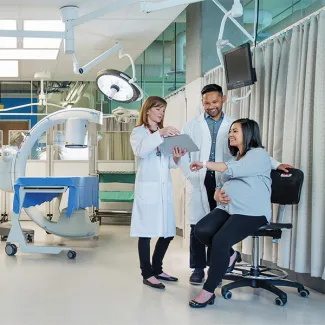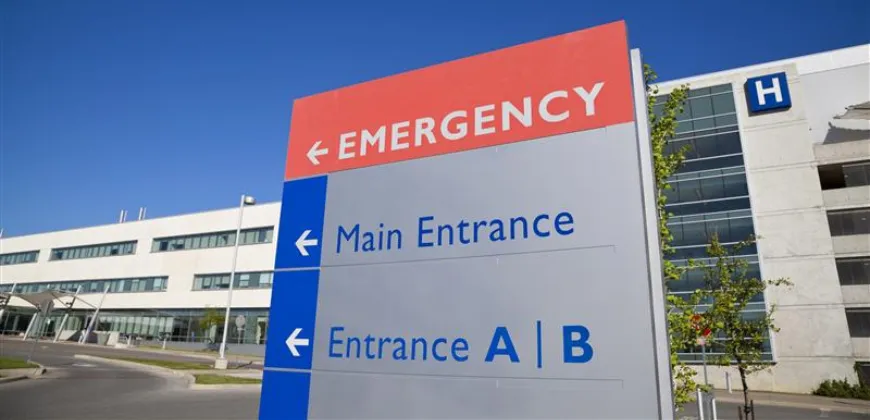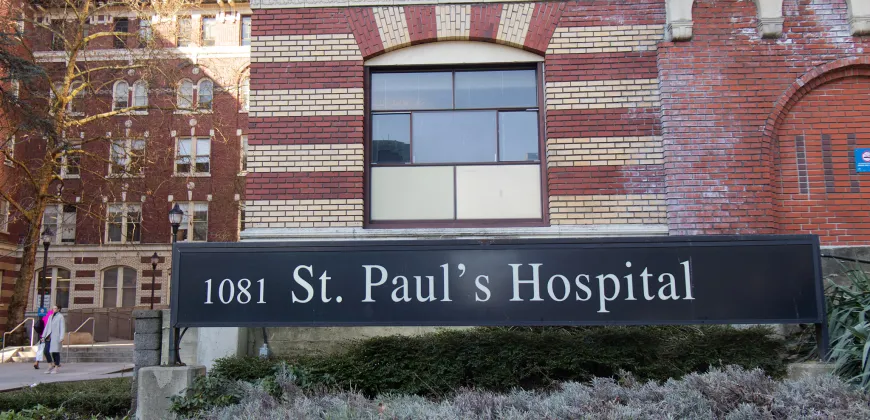Streamlining Accreditation: Enhancing Safety and Leadership in Healthcare

Refreshing an accreditation process
As part of her practicum in the Master of Health Leadership and Policy in Clinical Education, Jordan Quinlan developed customized manuals that will be used across all Provincial Health Services Authority (PHSA) sites to ensure their practices align with Accreditation Canada’s infection prevention and control standards.
Clinical Education students complete a practicum where they have the opportunity to apply the health-care and leadership knowledge they’ve gained over the course of the program to a real-world setting. Program Director Dr. Cheryl Segaric meets with students one-on-one early in the year to identify students’ interests and then proposes various practicum options. Jordan, a clinical nurse educator, shared their experience of this process with us.
Cheryl asked me if I would be interested in working on this accreditation project because of my past experience with quality improvement initiatives.
Jordan had previously instigated a weapons screening project at St. Paul’s Hospital in Vancouver to improve safety for staff and patients in the emergency department making this practicum a natural choice.
A new approach to accreditation
For her practicum, Jordan and fellow student Cheryl Surya worked with the PHSA Accreditation Refresh team and the infection prevention and control team to develop customized manuals that are reflective of each of the PHSA sites. This large portfolio includes BC Women’s Hospital, BC Children’s Hospital, BC Cancer, BC Mental Health & Substance Use Services and Correctional Health Services.
Under the previous system, each team lead would have to review up to 70 pages of standards and documentation to determine what elements of the accreditation process specifically applied to their program. Thanks to Jordan’s work, team leads can now refer to each customized manual that includes the information most relevant to them.
When it comes time for accreditation, team leads will benefit from this condensed format that only contains content that applies to their practice and program. The new manual lists out exactly what topics they need to find evidence for.
Growing as a leader
Jordan says that the practicum enabled her to slow down and apply learnings from her MHLP coursework.
This process illustrated to me the difference between being a point-of-care professional and a leader.
“In my work in emergency rooms I thrive in an environment that depends on efficiency and getting things done quickly. This practicum required me to embrace a slower process – to identify stakeholders, do an environmental scan, conduct research and get people on board to share information and contribute ideas.”
She says she pulled on strategies of change management that students explored in the business and leadership courses that make up about 40 per cent of the curriculum.
I recognized that what was an urgent priority for me in this work was not an equivalently urgent priority for others. I invested the time in meaningful conversations with staff to find out what they valued, what had been a challenge on prior assessments and then build a common ground for this new framework.
Taking the stress out of accreditation
For many health-care professionals, the accreditation process is perceived as a stressful and disruptive process. Jordan hopes that the new approach will help staff see the accreditation process as a valuable opportunity to improve safety and patient outcomes.
The work done by the MHLP students for the infection control and prevention standards represents the first of the new set of manuals PHSA is planning to develop.
PHSA will use the learning from the process to guide the work on other standard areas.
Looking ahead
Jordan came to the MHLP in Clinical Education with more than a decade of experience working in emergency departments across the Lower Mainland, both in point-of-care roles and as an educator.
She is committed to helping newly trained emergency nurses find their niche in the professional world, believing that much can be done to create healthy, safe workplaces where nurses and other health-care professionals can practice without burnout.
There’s this mindset out there that emergency departments aren’t sustainable places for people to work over their careers. I don’t believe it has to be that way. There’s such value in having people who want to continue working in this department.
She hopes to leverage the new leadership skills she’s developed over the two-year part-time MHLP in Clinical Education to move into roles where she can create psychologically safe workplaces and support health-care workers – which will ultimately translate to better patient-centred care.
“I am excited to explore how I can use this program to make a difference,” says Jordan.
I have a lot of opportunities with my ongoing work on safety and violence initiatives, but I want to move this to a regional level to identify ways to support our health-care workers – there are so many opportunities to improve patient outcomes and create better workplaces.



